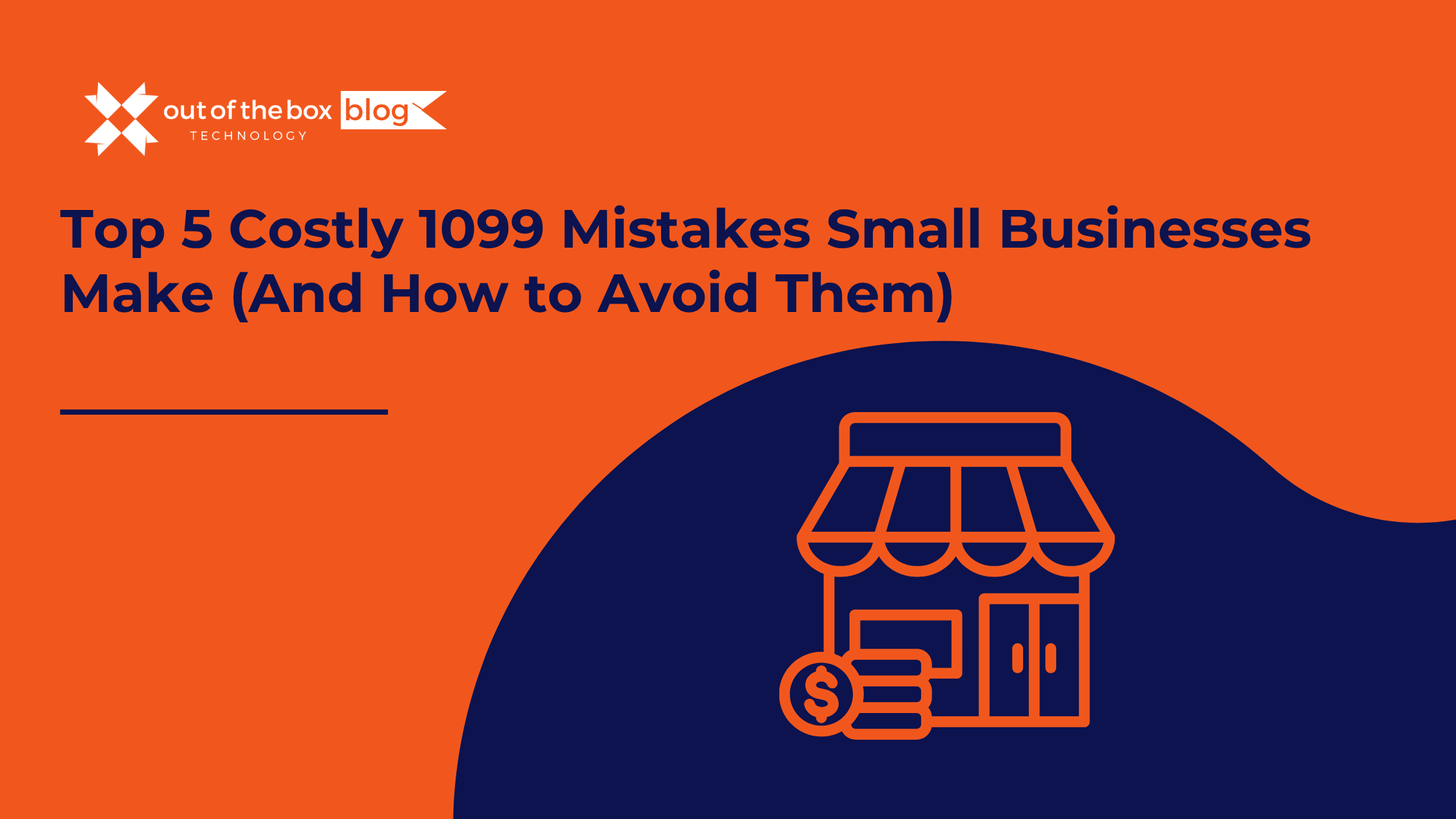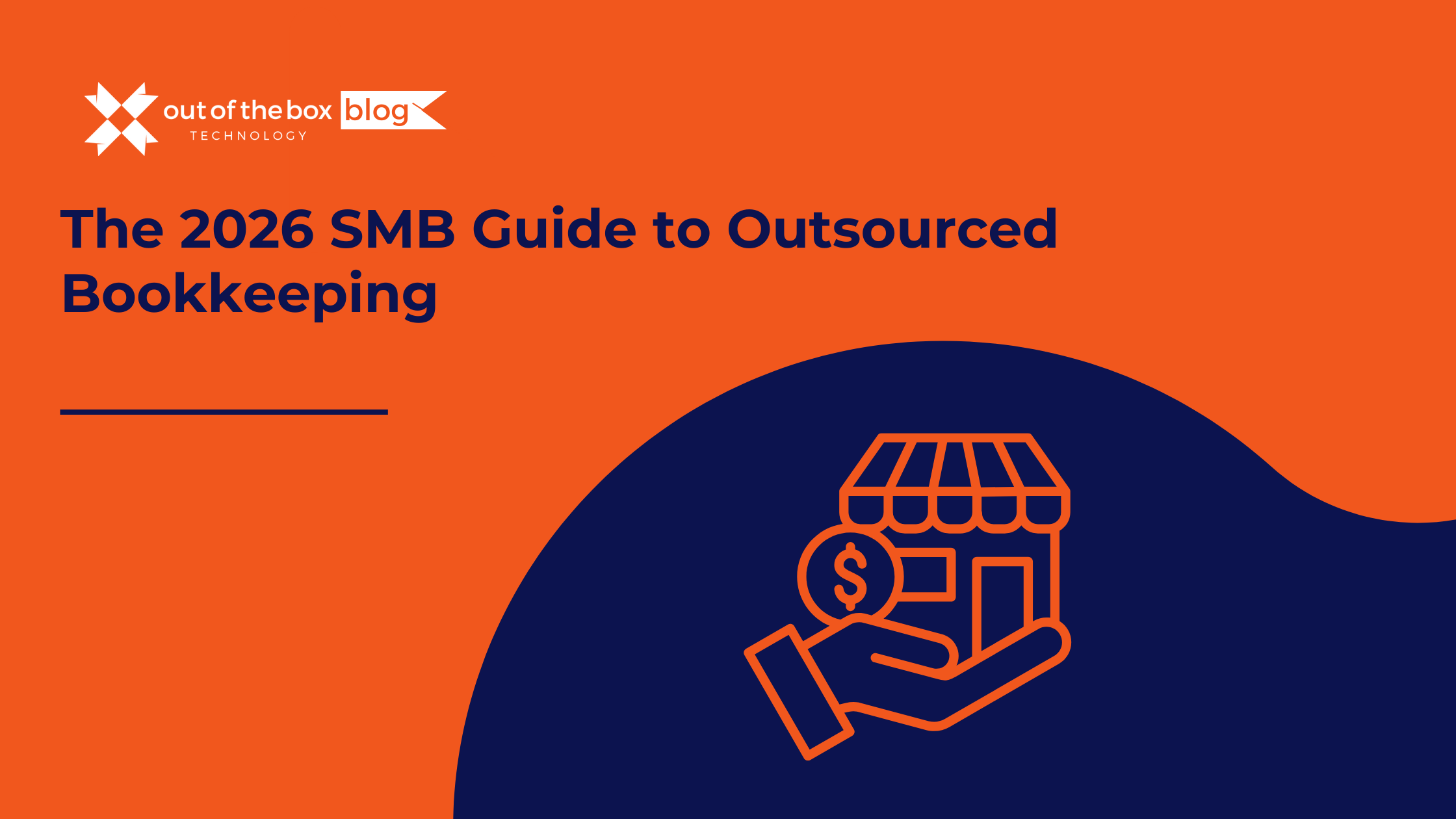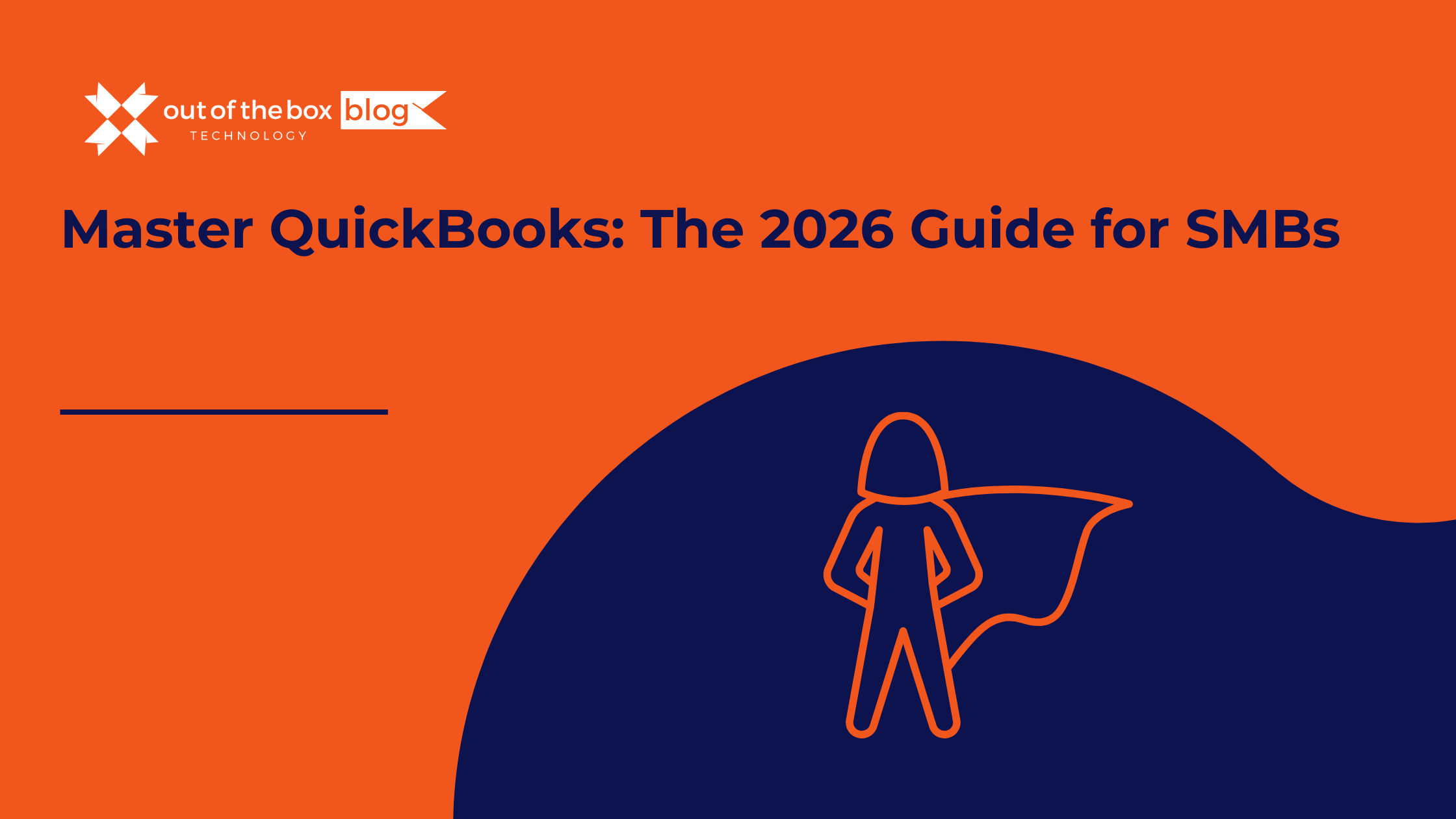For most small business owners, the date “January 31st” looms larger and is far more stressful than April 15th.
Why? Because this is the hard deadline for one of the most confusing, high-stakes, and error-prone tasks in the business calendar: filing your 1099s.
This annual scramble to figure out who you paid, how much you paid them, and which magic form to send is a compliance minefield. And the IRS has placed the entire burden of navigating it squarely on your shoulders.
Making a mistake isn’t just an “oops.” A 1099 error isn’t like a typo in an email; it’s a non-compliance issue that can lead to staggering financial penalties, audits, and even the reclassification of your entire business model.
At Out of the Box Technology, we’ve seen it all. We’ve helped thousands of business owners clean up their books, and we can tell you that the stress you feel about 1099s is a direct symptom of a year’s worth of messy or non-existent bookkeeping.
The good news? These mistakes are 100% avoidable.
This is your expert guide to the five most common—and costly—1099 mistakes. We’ll show you what they are, why they’re so expensive, and how a clean, professional bookkeeping system turns this annual nightmare into a simple, 10-minute task.
What’s Really at Stake? A Quick Look at the Penalties
Before we dive into the mistakes, let’s understand why this matters. The IRS is not forgiving here. They see 1099s as a primary tool to combat under-reported income, and they penalize businesses heavily for failing to file.
For 2024/2025 filings, penalties for each 1099 you fail to file or file incorrectly can range from:
- $60 per form if you’re up to 30 days late.
- $120 per form if you’re more than 30 days late but file before August 1.
- $310 per form if you file after August 1 or not at all.
- $630+ per form (or more) for “intentional disregard.”
Think about that. If you have 10 contractors and you just “forget,” you’re facing a minimum penalty of $3,100 ($310 x 10).
And that’s just the late filing penalty. The penalties for the #1 mistake on our list—worker misclassification—are in a different universe. We’re talking tens of thousands of dollars in back taxes, interest, and fines.
Now, let’s make sure that doesn’t happen to you.
Mistake #1: The “Business Killer” — Worker Misclassification
This isn’t just a 1099 mistake; it’s a fundamental, structural error that can put you out of business.
What It Is: You’ve been paying your “Project Manager” or “Full-Time Designer” as a 1099 contractor to “save money” on payroll taxes, benefits, and HR. You treat them like an employee (set their hours, give them a company laptop, manage their day-to-day work), but you pay them like a vendor.
Why It’s So Costly (The “Stakes”): This is the IRS’s favorite audit trigger. When that “contractor” files for unemployment or gets audited, the first thing the Department of Labor or IRS will do is investigate you.
If they rule you “willfully misclassified” an employee, you can be held liable for:
- Back Taxes: You’ll have to pay the entire employer-side payroll taxes (Social Security & Medicare) you should have been withholding… and the employee’s share you failed to withhold.
- Back Wages: You may be liable for overtime, minimum wage, and paid time off.
- Benefits: You may have to pay for benefits (like health insurance or 401k contributions) they would have been entitled to.
- Crushing Penalties: This includes the “failure to file” penalties on W-2s, “failure to deposit” penalties, and other fines that can easily reach $25,000+ per employee.
A Real-World Example: A home services client we onboarded had a “dispatcher” and two “lead installers” all on 1099s. They set their schedules, required them to wear company uniforms, and told them which jobs to do. This is a classic case of misclassification. They weren’t saving money; they were sitting on a six-figure time bomb.
How to Avoid It (The “Solution”): This is about the IRS’s “Right to Control” test. You must evaluate the relationship, the finances, and the behavior.
- Contractor (1099): They are a business. They use their own tools, set their own hours, and are free to work for your competitors. They send you invoices. They have a risk of loss or profit.
- Employee (W-2): You control how, when, and where they do their job. You provide the tools and training. You pay them a regular wage.
The Fix: If you’re on the fence, they are probably an employee. The cost of payroll tax is infinitely cheaper than the penalty for misclassification. Consult an HR specialist or your fractional controller immediately to audit your workforce.
Mistake #2: The “January Panic” — Failing to Collect Form W-9
This is the most common procedural mistake, and it’s the direct cause of the year-end scramble.
What It Is: You hire a contractor in March. They do the work, you pay them, and you move on. In January, you run your 1099 report and see you paid “John’s Painting, LLC” $5,000. But you don’t have their Tax ID Number (TIN) or their legal business name. Now you’re digging through emails and calling a vendor you haven’t spoken to in 10 months, begging for their tax info.
Why It’s So Costly (The “Stakes”): You cannot file a 1099 without a correct TIN. If you file with the wrong one, you get a “CP2100A Notice” from the IRS, which is a compliance headache. Worse, if you can’t get the TIN, you’re now in “intentional disregard” territory, opening you up to those higher penalties.
Worse still, the law says if you don’t have a W-9 on file, you are technically required to implement “backup withholding”—withholding 24% of their payment and remitting it to the IRS. Almost no small business does this, which puts you at further risk.
A Real-World Example: A client was panicking on January 28th. They had a $15,000 payment to a marketing consultant who had since “gone dark” and wasn’t returning calls. They couldn’t file. We had to file an extension for them and spend hours documenting their (failed) attempts to get the W-9 to protect them from “intentional disregard” penalties.
How to Avoid It (The “Solution”): This is a simple, iron-clad rule: No W-9, No Check.
This must become a non-negotiable part of your vendor onboarding process. Before you pay anyone, you must have a completed, signed, and dated Form W-9 on file.
- This form is your “golden ticket.” It gives you their legal name, their business structure (so you know if they’re a corporation you don’t have to 1099), and their Tax ID.
- When our monthly bookkeeping clients onboard a new vendor, the first step in our system is “Request W-9.” We don’t even enter them as a “payable” vendor until we have it. This makes January 31st a total non-event.
Mistake #3: The “Payment Method” Trap — Confusing Checks with Credit Cards
This is a modern mistake that causes massive confusion. “I paid my consultant $10,000 last year, but $8,000 was on my Amex and $2,000 was by check. What do I do?”
What It Is: You mistakenly believe you need to file a 1099 for all payments, regardless of method. Or, you mistakenly believe that any electronic payment (like Zelle or Venmo) counts as a “third-party” payment.
Why It’s So Costly (The “Stakes”): This leads to two errors:
- Over-filing: You send a 1099 for the full $10,000. Now the contractor’s income is being double-reported (once by you, and once by Amex on a 1099-K). This is a mess for their accountant.
- Under-filing: You only file for the $2,000 check payment. This is the correct action, but many people get confused and are not sure if they are compliant.
The Rule: You DO NOT file a 1099-NEC for any payment made by:
- Credit Card
- Debit Card
- Third-Party Payment Networks (like PayPal, Stripe, Venmo, or Cash App)
The payment processor (Amex, PayPal, etc.) is responsible for reporting those transactions (via Form 1099-K). You are only responsible for payments made by cash, check, or direct ACH bank transfer.
How to Avoid It (The “Solution”): Your bookkeeping system must be clean enough to separate this. A simple “Expenses by Vendor” report isn’t enough. You need an accounting system that shows which bank account was used for which payment.
This is where a professional bookkeeper is invaluable. We don’t just categorize the expense (e.g., “Contractor Labor”); we reconcile the payment (e.g., “Paid from Amex” vs. “Paid from Checking”). This allows us to run a report in January that only shows 1099-eligible payments.
Mistake #4: The “Wrong Form” — 1099-NEC vs. 1099-MISC
This is a “newer” mistake. Before 2020, you put almost everything on the 1099-MISC. The IRS split the form, and now everyone is confused.
What It Is: You use the 1099-MISC (Miscellaneous) form to report payments for services, or you put rent payments on a 1099-NEC.
Why It’s So Costly (The “Stakes”): Filing the wrong form is the same as not filing.
- The 1099-NEC has a January 31st deadline.
- The 1099-MISC has a March 1st (if paper) or March 31st (if e-filing) deadline.
If you put a $5,000 service payment on a 1099-MISC and file it on March 15th, you are not compliant. You have failed to file a 1099-NEC by the January 31st deadline, and you are subject to the penalties.
How to Avoid It (The “Solution”): It’s simple:
- 1099-NEC (Non-Employee Compensation): Use this for SERVICES. If you paid someone (who isn’t an employee) for their work, their labor, their expertise… it’s a 1099-NEC. Think: your marketing agency, your IT consultant, your janitorial service, your lawyer.
- 1099-MISC (Miscellaneous): Use this for OTHER things. The most common is Rents (e.g., your office space), royalties, or prizes and awards.
A clean Chart of Accounts is the fix. In our bookkeeping, we have separate expense accounts for “Contractor Labor” (which maps to 1099-NEC) and “Office Rent” (which maps to 1099-MISC).
Mistake #5: The “All or Nothing” — Ignoring the $600 Threshold
This is a mistake of interpretation. The rule is you must file a 1099 for anyone you paid $600 or more.
What It Is:
- Mistake A: You pay a contractor $599. You think, “Great, I’m just under the limit, no 1099 needed.” This is technically true, but it’s a red flag if you do it often.
- Mistake B (More Common): You pay a contractor $200 in February, $300 in July, and $250 in November. You think of them as “small” payments and forget they add up.
- Mistake C (Worst): You pay a contractor $5,000. You think, “The $600 rule is just a suggestion, I don’t need to file.” This is intentional disregard.
Why It’s So Costly (The “Stakes”): The $600 threshold is an aggregate. Your accounting software must be able to total all payments (by check, cash, or ACH) to a single vendor for the entire year.
A business owner who paid a contractor $550 might think, “I’ll just pay him $50 more in cash so it’s not on the books.” This is tax fraud. It’s the “small” crime that auditors love to find, as it proves “intentional disregard” and opens the door to much larger penalties.
How to Avoid It (The “Solution”): This is the simplest fix of all: Clean, monthly bookkeeping.
When your books are reconciled every single month, you don’t have to “hunt” for payments. You just run one report on January 5th: “Expenses by Vendor.”
This report will instantly show you:
- Vendor A: $12,500
- Vendor B: $2,800
- Vendor C: $550
You instantly know you must file for A and B, and you don’t for C. The entire “hunt” is over in 30 seconds. This is the peace of mind that comes from a professionally managed accounting system.
The Ultimate Solution: Stop Treating Symptoms
Reading this list, you may feel overwhelmed. You’re trying to run a business, not be an IRS compliance expert.
The stress you feel about 1099s is a symptom. The disease is 12 months of disorganized, DIY, or “shoe-box” bookkeeping.
When your books are a mess, 1099 season is a 40-hour forensic accounting project. When your books are clean, 1099 season is a 10-minute administrative task.
This is what we do. Our Outsourced Bookkeeping and Accounting Clean-Up services are designed to permanently solve this problem. We build the W-9 collection into your process. We reconcile your accounts monthly. We categorize your payments by type and method.
We make January 31st just another day.
1099 Mistakes: Frequently Asked Questions (FAQs)
Q1: What is the difference between a 1099-NEC and a 1099-MISC? The 1099-NEC is for Non-Employee Compensation. You use it to report payments of $600 or more for services rendered by a contractor. The 1099-MISC is for Miscellaneous income, like office rent, royalties, or prizes.
Q2: Do I have to send a 1099 to a corporation or S-Corp? No. You generally do not have to send a 1099-NEC or 1099-MISC to a C-Corporation or an S-Corporation. The only way to know their status is to have a Form W-9 on file, where they check the box for their corporate structure. (The exception: you must file a 1099 for legal services, even if the firm is a corporation).
Q3: What are the exact 1099 penalties for 2024-2025? For forms due in 2025 (for the 2024 tax year), the late filing penalties are:
- $60 per form (1-30 days late)
- $120 per form (31 days late to Aug 1)
- $310 per form (After Aug 1 or not filed) Penalties for “intentional disregard” can be $630 per form or higher, with no limit.
**Q4: What if I paid someone exactly $600?** Yes, you must file. The rule is “$600 or more.”
Q5: What if I can’t get a W-9 from a contractor? You are in a tough spot. You must document your attempts to get it (e.g., save your emails and letters). You may still be required to file the 1099 with the information you have (name, address) and leave the TIN field blank. The IRS will flag this, but your documentation can help protect you from “intentional disregard” penalties. Talk to your accountant immediately.
Don’t Let a $600 Payment Cause a $10,000 Problem
Your time is too valuable to be spent in a January panic. This year, make the strategic decision to get it right. Build a simple, iron-clad process for W-9s. And most importantly, invest in a clean, reconciled, professional bookkeeping system.
If you’re reading this and feeling the knot of anxiety in your stomach, we can help.




